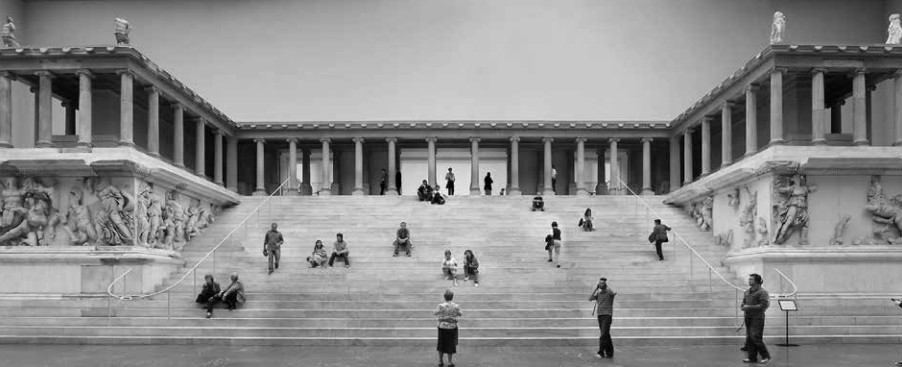Downloads
DOI:
https://doi.org/10.51461/issn.2309-3072/84.2551Keywords:
orthogonal, Hippodamian system, Order, Polis, Hellenistic, RomanAbstract
This article examines the formation and development of the orthogonal planning structure of the ancient cities of the Hellenistic era and Rome. It reveals the development line from the order system and rectangular peristyle public and residential spaces to a complete orthogonal urban structure. On this basis, the authors put forward the idea of the orthogonal essence of the antique city, which combines these elements on the basis of the principle of simplicity and equality. Architectural approaches are shown to locate the city on the ground and combine its various elements into a single organism diversifying the layout by combining several orthogonal systems. The region of study is Asia Minor, the area of active economic and social development of the antiquity, which contained poleis with a wide variety of layouts, size and composition, interesting for the analysis of their urban structure. The authors give examples of the layouts of famous cities such as Priene, Magnesia, Knidos, Sagalossos, as well as new material for the planning of Pergamon.
How to Cite
Published
Issue
Section
References
Aristotle. (2015). Politics. Moscow: Akad. proekt. Barrington Atlas of the Greek and Roman World. (2000). Princeton: Princeton University Press.
Castagnoli, F. (2021). Orthogonal Town Planning in Antiquity. Cambridge: MIT Press Cambridge.
Gladkiy, V. D. (1998). Ancient world. In Encyclopaedical dictionary: In 2 vols. Moscow: Tsentrpoligraf.
Lewis, D.-M., Boardman, J., Davies, J.-K., & Ostwald, M. (Eds.). (2014). The Cambridge Ancient History. Moscow: Ladomir.
Mikhailov, B. P. (1967). Vitruvii i Ellada: Osnovy antichnoi teorii arkhitektury [Vitruvius and Hellas: Bases of the antique theory of architecture]. Moscow: Stroyizdat.
Mikhailov, B. P. (1973). Arkhitektura antichnogo mira (Gretsiya i Rim) [Architecture of the ancient world (Greece and Rome)]. In General History of Architecture: In 12 vols. (Vol. 2). Moscow: Stroyizdat.
Musatov, A. A. (2008). Arkhitektura antichnoi Gretsii i antichnogo Rima: Zarisovki k ekzamenu po Vseobshchei istorii arkhitektury [Architecture of Ancient Greece and Ancient Rome: Sketches for the exam on the General History of Architecture]. Moscow: Arkhitektura-S.
Nevett, L. C. (2023). Ancient Greek Housing. Cambridge: Cambridge University Press.
Polyakov, E. N., & Kryukova, Y. E. (2015). The concept of ideal city-state in Aristotle’s works. TSUAB Journal of Construction and Architecture, 4, 9-21. Retrieved February 20, 2025, from https://cyberleninka.ru/ (date of address: 20.02. 2025).
Polyakov, E. N., Mayorova, E. V., & Shabalina, M. A. (2008). Tvorcheskoe nasledie Gippodama Miletskogo [The creative heritage of Hippodamus of Miletus]. TSUAB Journal of Construction and Architecture, 3, 5-18. Retrieved February 20, 2025, from https://cyberleninka.ru/
Roland, M. (1987). L’architecture d’époque classique en Asie Mineure. In Architecture et urbanisme (pp. 187–198). Athènes: Ecole française.
Steele, J. (1993). Hellenistic Architecture in Asia Minor. London: Academy Editions; New York: St. Martin’s Press.
Yegül, F, & Favro, D. (2019). Roman Architecture and Urbanism: From the Origins to Late Antiquity. Cambridge: Cambridge University Press.




